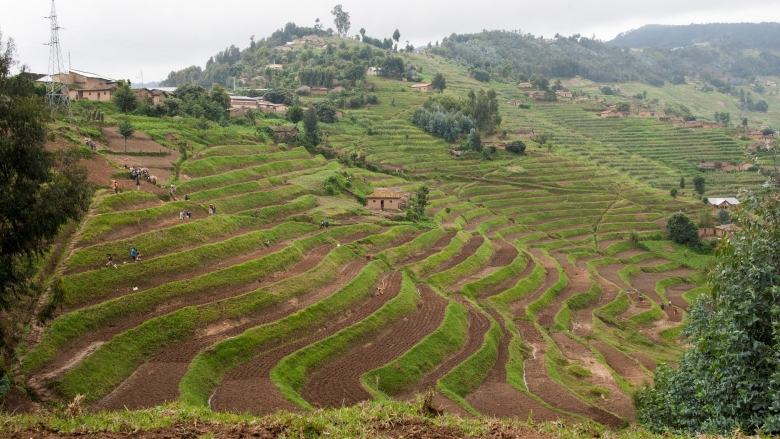Ramoroa Sekeleme, a farmer in the T’sana-Talana Rangelands of southwestern Lesotho, has depended on wool and mohair income for a living, for over two decades. However, in 2011, climate change became a reality for him. “The shrub invasion started spreading around 2011. That is when we realised that we have a serious challenge. In 2015 we were attacked by a severe drought which worsened the situation”, he explained. “With no grass for the sheep to feed on, It affected production negatively. The weight of my wool was very low measured at the shearing shed”, he added. Sekeleme and his farming colleagues established the Tšoaranang-ka-Matsoho Makhaleng Grazing Association on the recommendation of the Lesotho Highlands Development Authority.
Sekeleme, who is the group’s chair, said that the association had helped smallholders like him preserve the rangelands since its establishment in 2019. The association has also benefitted from a partnership with Lesotho’s Wool and Mohair Promotion Project, which is a country-wide initiative to boost resilience to climate change and economic shocks among smallholder wool and mohair producers in the mountain and foothill regions of Lesotho. According to project officer Phomolo Lebotsa, the 7-year initiative seeks to increase the quality and quantity of wool and mohair produced by farmers. “Lesotho is a country that has always prided itself in the production of wool and mohair. However, climate change threatened this economic activity prompting the government to develop a plan to build resilience”, he explained. Climate-smart rangeland management has been implemented through grazing associations, most of which are certified by the government.
Farmers in these associations get access to practical information on rangeland management using climate-smart approaches. “Where there is a grazeland association, the rangelands there are invariably in a better position compared to places without grazeland associations”, said Lebotsa. The project has also built capacity for the country’s weather forecasting department, purchasing ultra-modern forecasting equipment; to ensure farmers get accurate information on weather patterns for adequate planning. Besides, farmers under the project, are trained in fodder production, easing the consumption and dependence pressure on the rangelands, which threaten the quantity and quality of the wool and mohair. “We have different types of fodder all of which best thrive in different weathers. If weather forecasts show we will have rains for a long time, and then we advise the farmers to plant the type that best grows in that climate”, explained Lebotsa.
Before the project, much of the rangelands were strained, making the unpalatable species overgrow. While grazing associations were, in their small capacities trying to correct the encroachment by these foreign species, Lebotsa explains that the project has fast-tracked the process. “When we started, the unit wool and mohair yield per animal was less than 3kg but today, seven years later, the yield is more than 4kg”, he said. Sekeleme and his farming colleagues acknowledge that they generate higher incomes and more sustainable livelihoods from the project. “Yes, there is a positive change. The change is quite impressive. In the past year alone, there was a sizeable positive improvement in our income”, said Sekeleme.



